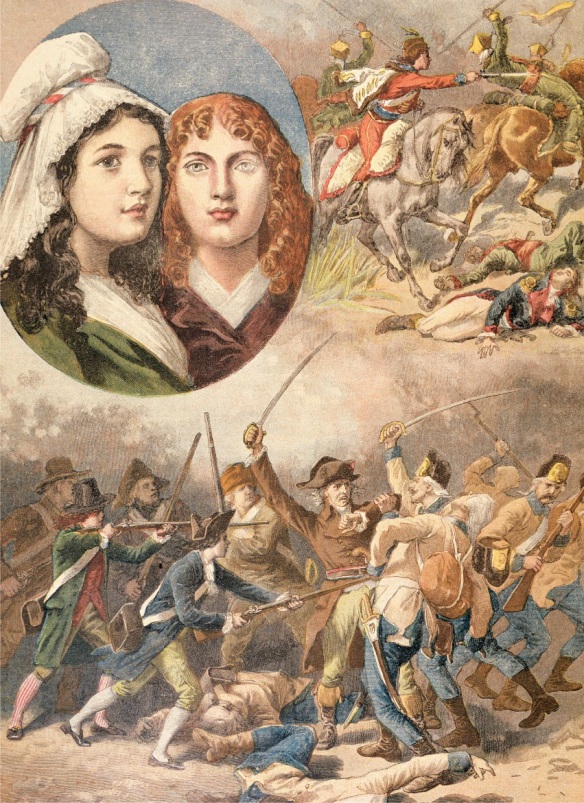The French Heroines, Félicité and Théophile de Fernig in 1792, from “Le Petit Journal”, 27th August 1894 (coloured engraving), Lix, Frédéric (1830—97) / Private Collection, Archives Charmet / The Bridgeman Art Library
The French Revolution destroyed the monarchy that had ruled France for centuries, and it loosened people’s ideas about the role of women in war. Just as numerous women took part in the violence of the Revolution and its aftermath (Maximilien de Robespierre had a bodyguard made up entirely of women, in part to protect him from another woman, a royalist, who was trying to assassinate him), there were brave women fighters in the French army.
Chief among these were the Fernig sisters—Félicité, twenty-two, and Théophile, seventeen. Born in Flanders, they had been raised outdoors by their huntsman father and were sharpshooters and excellent archers. When the Revolutionary Wars broke out, they fought with local militia against the Austrians, blackening their faces, wearing men’s clothing, and using their knowledge of the countryside to set up night ambushes. Their exploits became known, and they were introduced to General Charles François Dumouriez, who was so impressed by Fernig sisters that he gave them horses and uniforms. The sisters fought at Valmy and Jemappes; at the latter battle, Félicité killed two Austrians who were about to bayonet a young Belgian officer to death. Both women, as a French review board later wrote, “were very capable of killing their men.”
When Dumouriez ran afoul of the radical French government and defected in 1794, the loyal Fernig sisters defected with him. Although a monument now stands to them at the site of the battle of Jemappes, the French revolutionary government at the time never forgave them, and they remained outcasts for the rest of their lives.
